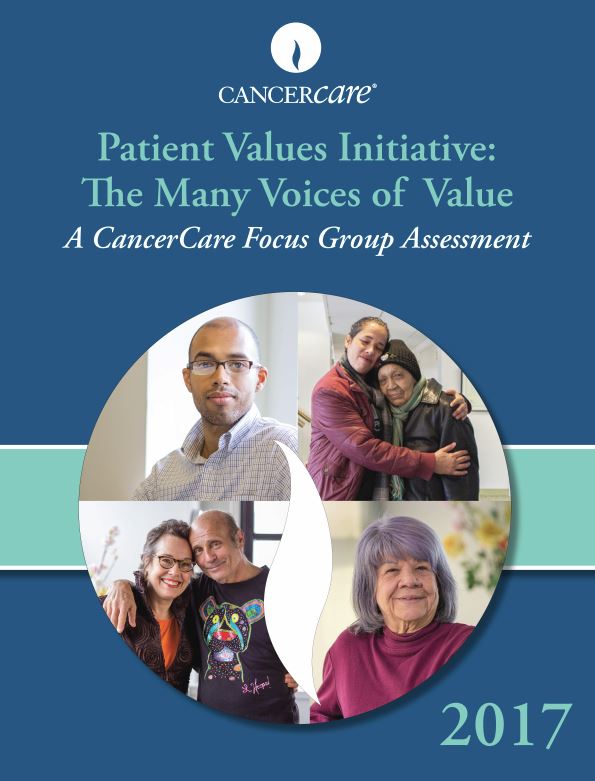Informed Decision Making in Cancer Care: More Myth Than Reality

This post originally appeared on the STAT blog.
For nearly a decade, the most distinguished minds in cancer care have advocated for shared decision-making — patients partnering with their clinicians to make informed decisions that are consistent with their needs, values, and preferences. Although widely perceived as the gold standard for decision-making, in cancer care it seems to be the exception rather than the rule.
My organization, CancerCare, has surveyed more than 3,000 American adults with cancer. Many of them noted that during their planning for treatment, they did not have enough information about whether they would be able to work, the care they'd need at home, the cost of treatment, other treatment options, caregiver responsibilities, and opportunities for joining a clinical trial. That doesn't sound like informed decision-making to me.
Many factors influence cancer treatment decisions, including safety, effectiveness, and cost. The emergence of new decision-support tools — value frameworks, pathways, guidelines, and the like — is helping inform physicians' recommendations. But most of these tools are shaped through the eyes of providers and payers, and often ignore what matters most to patients.
Merging the person with the patient
Many years ago, a close friend of mine was diagnosed with stage 2 colon cancer. Since he was only 48, his oncologist recommended a post-surgery course of chemotherapy. After doing some homework, my friend opted against doing that. As a dentist, he perceived the possibility of peripheral nerve damage from chemotherapy as too risky. He was willing to sacrifice a few points on the survival curve in order to protect his ability to continue working and support his family.
Most cancer patients don't have my friend's capacity to assess the personal benefits and risks of a particular treatment. After receiving a cancer diagnosis, many nod their heads at a recommended treatment plan that may optimize effectiveness, safety, and cost, but may not consider their personal quality-of-life goals and priorities.
Participation in treatment planning
A recent CancerCare report, "The Many Voices of Value," seeks to shed light on how patients participate in deciding on a cancer treatment plan and how they view their roles and relationships with their care providers. Through conversations with cancer patients and oncology social workers, common themes emerged:
- Patients do not feel they are active participants in developing their cancer treatment plans
- Discussions about treatment planning are often overwhelming for people newly diagnosed with cancer
- Few realize they can ask questions; even fewer know what questions to ask during these discussions
- Patients want their providers to recognize and appreciate the effect treatment has on their lives
- Patients' priorities and perceptions of their treatment change over time
Most of the cancer patients we talked with said that upon first learning they had cancer, they felt overwhelmed, anxious, and frightened. Patients are often eager to start treatment as soon as possible, even though for most cancers, taking a few weeks to understand the diagnosis and get more than one treatment recommendation would help them make more rational decisions without compromising the prognosis.
At the outset of their cancer journeys, it was nearly impossible for these patients to articulate priorities and understand the implications of treatment choices. With time, many said they were better able to communicate with their care team what mattered most to them and try to incorporate that into their care regimens. By then however, an initial treatment plan that may not have been aligned with their preferences was usually already underway.
Dr. Susan Love, a renowned breast surgeon who has also been a cancer patient as well as a care partner for a loved one with cancer, is all too familiar with the emotional and logistical complexities that assault individuals newly diagnosed with cancer. Although deeply committed to treatment plans that are built around patients' preferences and priorities, she is also acutely aware of the time and resource pressures of clinical care delivery. In a recent conversation, she explained to me that "In this era of multi-modality care provided by a team of cancer specialists, the implementation of a treatment plan can resemble a relay race. And once it starts, we're all on a well-choreographed path that can make it awkward to reconfigure."
When cancer is diagnosed, the first treatment regimen is generally the best shot for cure or control. But it is generally accompanied by short-term and sometimes long-term physical, emotional, and financial side effects. It can also foreclose later treatment options, including clinical trials. In other words, initial treatment decisions have significant implications for people with cancer and their families.
Our research findings reinforce the conclusion that new resources or approaches are needed to help patients understand and define their priorities and preferences — and to help providers to ask about them — before treatment begins. Although most practices don’t collect this kind of information in patients' electronic health records, intake forms could be modified to include questions about work life, household responsibilities, favorite activities, pending events (like weddings), and personal goals. Or a member of the care team could have an introductory conversation with a new patient that elicits this information, which can then be communicated to the rest of the team through the electronic health record or some other way.
To truly deliver patient-centric cancer care, providers and patients must partner to personalize the planning and implementation of cancer treatments and achieve the high-quality care that clinicians demand and patients deserve.
